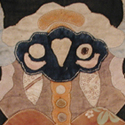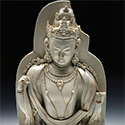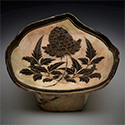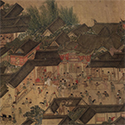|
|
| Show All 15 Results (Text Only) |
|
| Archaeological Footprint: Can we really know about the past from things left behind? [PDF] |
|
|
In this lesson plan students will analyze the objects in the Cyrus Tang Hall of China, either onsite at The Field Museum or online and think about how history is learned through objects. They will also theorize about what gaps can exist when stories are told through objects
Go to Museum Resource: https://www.fieldmuseum.org/sites/default/files/archaeological_footprint.pdf | |
|
|
| Chinese Textiles from the Collection of The Field Museum |
|
|
A selection of images from the Museum's collection of Chinese folk textiles, which constitutes the largest collection of early-20th-century Chinese folk textiles in the world. Items includes clothing, household items, theatrical costumes, religious items, and other accessories. See also:
The Carl Schuster Collection of Chinese Textiles.
Go to Museum Resource: https://www.fieldmuseum.org/node/4951 | |
|
|
| Confucianism, Daoism, Buddhism: How do different belief systems fit together in one country? [PDF] |
|
|
In this lesson plan students will explore three major belief systems in China–Buddhism, Confucianism, and Daoism - through art and artifacts. Through discussion and object-study, students will wrestle with how these different belief systems co-existed in China, and how they influenced and Informed each other. Spanish PDF also available.
Go to Museum Resource: https://www.fieldmuseum.org/sites/default/files/lifeways.pdf | |
|
|
| Cyrus Tang Hall of China |
|
|
Wealth of information on China – geography, history, beliefs, artifacts, theater, with lesson plans, some listed on this site.
Go to Museum Resource: http://chinahall.fieldmuseum.org/explore | |
|
|
| Evolving Language: How has language changed the world? [PDF] |
|
|
In this lesson plan students will explore the history of writing in China and draw conclusions about the impact of the written word on human civilizations, and how language has changed over time.
Go to Museum Resource: https://www.fieldmuseum.org/sites/default/files/language.pdf | |
|
|
| Exploring Objects: How many stories can one object tell? [PDF] |
|
|
In this lesson plan students will analyze objects using a variety of disciplinary lenses, including anthropology, history, economics, geography, and art history. Students will then collaborate to explore the role of different social scientists in uncovering the stories objects hold.
Go to Museum Resource: https://www.fieldmuseum.org/sites/default/files/objects.pdf | |
|
|
| Exploring the Qingming Scroll: What does an idealized image of society tell us? [PDF] |
|
|
In this lesson plan students will learn about the contradictions contained within the Qingming Scroll and compare it to present-day representations of idealized societies.
Go to Museum Resource: https://www.fieldmuseum.org/sites/default/files/qingming.pdf | |
|
|
| Hall of Jades |
|
|
Online presentation of a 2004 exhibition. With background information about jade -- jade as a stone, the colors of jade, jade-working methods, and where jade can be found -- plus images of jade objects produced throughout China's history, from Neolithic China to the present.
Go to Museum Resource: http://www.fieldmuseum.org/exhibitions/elizabeth-hubert-malott-hall-jades | |
|
|
|
| Show All 15 Results (Text Only) |








